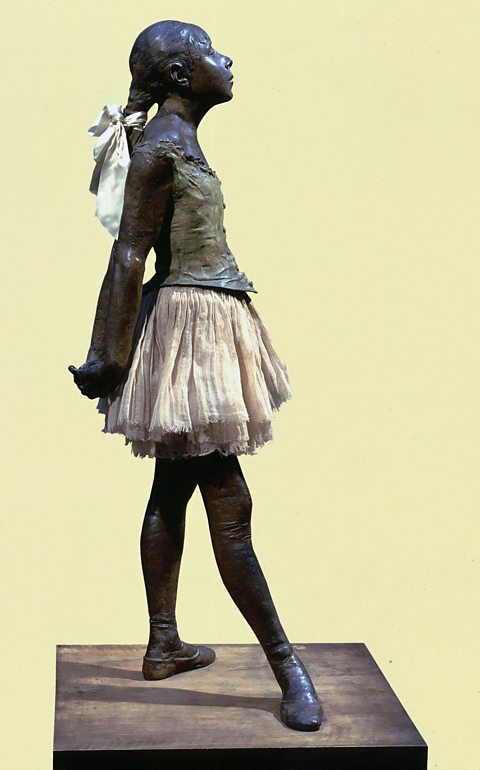Actual texture
Actual texture, or physical texture, means the actual physical surface of an artwork or design. It describes the tactileRelating to the sense of touch feeling you would get if you were able to run your hand over an artwork.
This feeling can vary depending on the materials the artist used to create the piece of work. It could be smooth, bumpy, coarse, rough or many other textures.
Actual texture is the result of the materials used and the artist or designer's technique.

The roof terrace of Casa Mila (Antonio Gaudi 1906-12) feature sculptural chimneys in a variety of textures.
organicIrregular, flowing or relating to nature. In art and design, organic shapes, forms or lines are imperfect as opposed to perfect geometric elements. forms made of limestone create smooth, flowing shapes.
In contrast, broken glass, tiles and marble are used to create a rough texture. These create the appearance of armoured helmets.


The figure of Little Dancer, Aged Fourteen (Edgar Degas, 1880 – 1881) was originally cast with coloured beeswax but has been reproduced here in bronze. The face is smooth, suggesting the young dancer's skin. Rougher texture on the legs could suggest wrinkles in the fabric of tights.
The dancer’s clothing is made from real textiles. Silk ribbon, a cotton and silk tutuA short layered skirt worn by female ballet dancers and a cotton bodiceThe part of a woman's clothes above the waist, particularly a fitted vest or laced-up girdle. are all actual textures that add to the realism of the sculpture.

Question
What is meant by actual texture?
Actual texture refers to how an object would feel if you touched it, rather than how it looks. Artists might choose rough or smooth materials in their medium to create the desired effect.